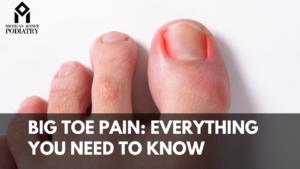Running is a fantastic way to stay fit and healthy, but it can take a toll on your feet if you’re not careful. Whether you’re a seasoned marathoner or just starting out, taking care of your feet is essential for preventing injuries and ensuring a comfortable running experience. In this article, we’ll discuss the top 10 foot care tips for runners to keep you pounding the pavement pain-free.
Ten Foot Care Tips To Focus On For Runners
1. Choosing the Right Footwear
One of the most critical aspects of foot care for runners is selecting the proper footwear. Investing in a good pair of running shoes that provide adequate support and cushioning is essential for preventing injuries such as shin splints and plantar fasciitis. Additionally, consider factors such as your foot shape, arch type, and running gait when choosing the right shoes for you.
2. Proper Warm-Up and Cool Down
Before heading out for a run, it’s essential to warm up properly to prepare your muscles and joints for exercise. Dynamic stretches such as leg swings, lunges, and high knees can help loosen tight muscles and improve flexibility. After your run, be sure to cool down with static stretches to help prevent muscle soreness and stiffness.
3. Maintaining Proper Hygiene
Keeping your feet clean and dry is crucial for preventing common foot problems such as athlete’s foot and fungal infections. Wash your feet daily with soap and water, making sure to dry them thoroughly, especially between the toes. Consider using foot powder or antifungal spray to keep your feet dry and odor-free.
4. Managing Blisters and Calluses
Blisters and calluses are a common occurrence for runners, but they can be prevented with the right precautions. Choose moisture-wicking socks that reduce friction and wear properly fitting shoes to prevent blisters from forming. If you do develop a blister or callus, avoid popping them and instead, apply a blister pad or moleskin to protect the affected area.
5. Trimming Toenails Correctly
Improperly trimmed toenails can lead to painful ingrown nails, so it’s essential to keep them trimmed regularly. Trim your toenails straight across and avoid cutting them too short to prevent ingrown nails from developing. Be sure to use proper nail clippers and avoid cutting the corners of your nails, as this can increase the risk of ingrown nails.
Read More
6. Using Orthotic Inserts
Orthotic inserts can provide additional support and stability for runners with foot issues such as flat feet or high arches. These inserts can help distribute pressure more evenly across the foot and correct any biomechanical imbalances that may lead to injury. Consult with a podiatrist or running specialist to determine the best type of orthotic inserts for your needs.
7. Strengthening Foot Muscles
Strong foot muscles are essential for maintaining proper form and preventing injuries while running. Incorporate exercises such as toe curls, toe spreads, and arch lifts into your regular strength training routine to help strengthen the muscles in your feet and improve stability.
8. Avoiding Overtraining and Overuse Injuries
While it’s essential to push yourself to improve as a runner, it’s equally important to listen to your body and avoid overtraining. Incorporate rest days into your training schedule to allow your muscles and joints time to recover and repair. Pay attention to any signs of overuse injuries such as persistent pain or swelling and adjust your training accordingly.
9. Seeking Professional Help When Necessary
If you experience chronic foot pain or recurring injuries despite taking preventive measures, it may be time to seek professional help. A podiatrist or sports medicine specialist can assess your foot mechanics and provide personalized recommendations to address any underlying issues. Don’t ignore persistent foot problems, as they can worsen over time if left untreated.
10. Conclusion
Taking care of your feet is essential for maintaining a healthy and enjoyable running routine. By following these top 10 foot care tips for runners, you can minimize the risk of injuries and keep your feet happy mile after mile. Remember to invest in quality footwear, practice proper hygiene, and listen to your body to ensure a long and injury-free running career.
FAQs (Frequently Asked Questions)
- How often should I replace my running shoes? It’s recommended to replace your running shoes every 300-500 miles or when you notice signs of wear and tear such as decreased cushioning or worn-out treads.
- Is it normal to experience foot pain when starting a new running routine? Some degree of foot discomfort is normal when starting a new running routine as your feet adjust to the increased activity. However, persistent or severe pain should be addressed by a medical professional.
- Are minimalist running shoes better for foot health? Minimalist running shoes can be beneficial for some runners as they promote a more natural foot motion. However, they may not be suitable for everyone and should be introduced gradually to prevent injuries.
- How can I prevent black toenails from running? To prevent black toenails caused by repetitive trauma, ensure your running shoes have enough toe room and trim your toenails regularly. Wearing moisture-wicking socks can also help reduce friction and pressure on the toes.
- What should I do if I develop a foot injury while running? If you develop a foot injury while running, it’s essential to rest and allow your foot time to heal. Apply ice to reduce inflammation and elevate your foot to reduce swelling. If the pain persists, consult a healthcare professional for further evaluation and treatment options.




